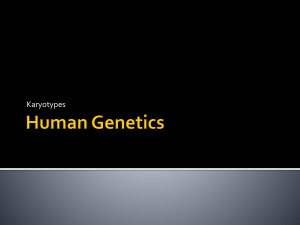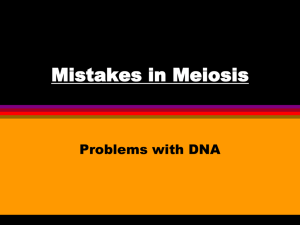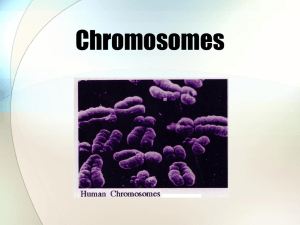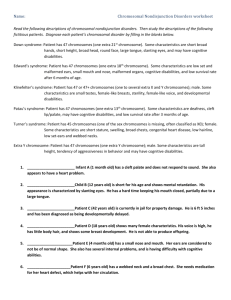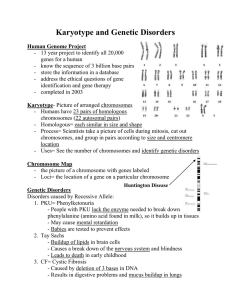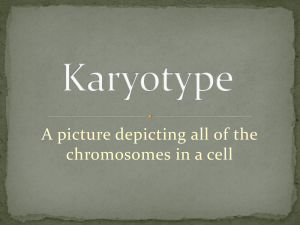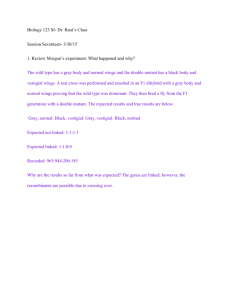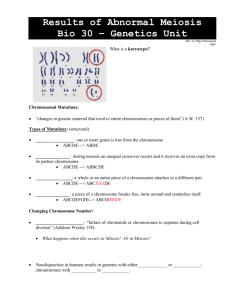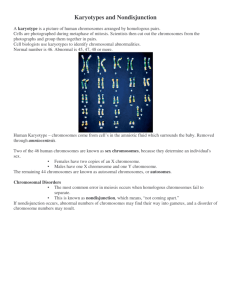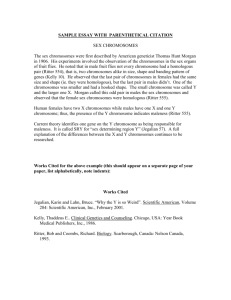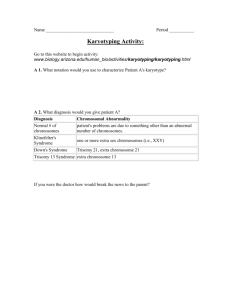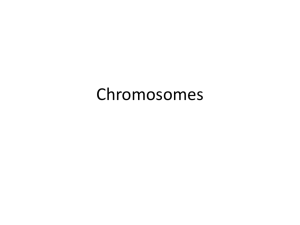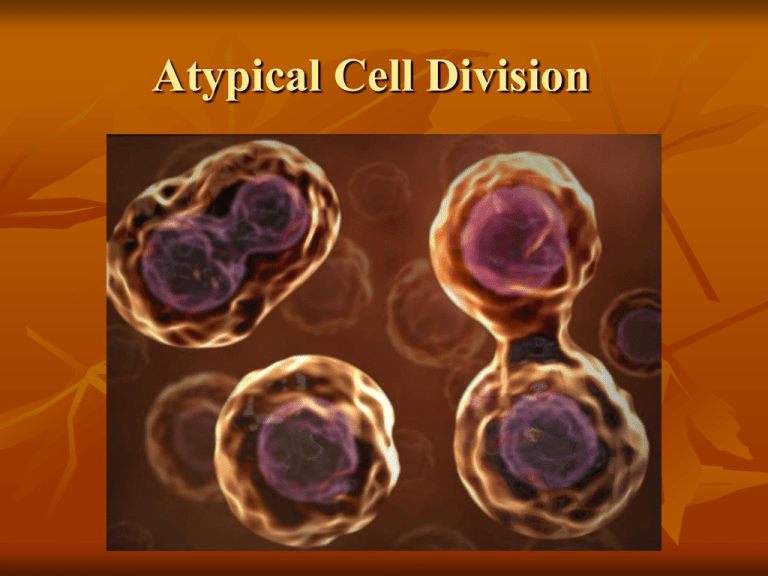
Atypical Cell Division
Sometimes, body processes can go wrong. One
of these processes is cell division.
When something goes wrong with a somatic
cell, there are millions of other cells in the
same place so it often causes no noticeable
effect.
When something goes wrong with a
reproductive cell, however, it is more trouble.
If that sperm or egg with a problem results in
an embryo all of the cells will be affected.
Nondisjunction is a failure to separate that
can occur between two homologous
chromosomes during meiosis.
As a result, one of the daughter cells is
missing a chromosome, and the other has an
extra chromosome. These cells will not
function properly.
If the cell with the extra chromosome
develops, one of the problems is Down
syndrome.
People with Down syndrome have an extra
chromosome on pair 21. This usually results in
a mental disability, though there are a wide
range of possibilities.
Klinefelters syndrome is another example of
too many chromosomes. The child inherits two
X chromosomes and a Y chromosome.
The child is a male, but has high levels of
estrogen. They do not develop sperm and
cannot father children.
An example of a disorder caused by not
enough chromosomes is Turners syndrome.
Turner syndrome occurs when a female baby
has only one X chromosome. These females do
not mature sexually and are shorter in height.
Karyotyping
A karyotype is a picture of the chromosomes
from a cell, arranged in homologous or similar
pairs.
The chart is organized from the largest pair
(#1) to the shortest pair (#22).
Pair #23 are the sex chromosomes. Remember
that because a male has mismatched sex
chromosomes that will be the only time the
two chromosomes don’t look exactly the same.




